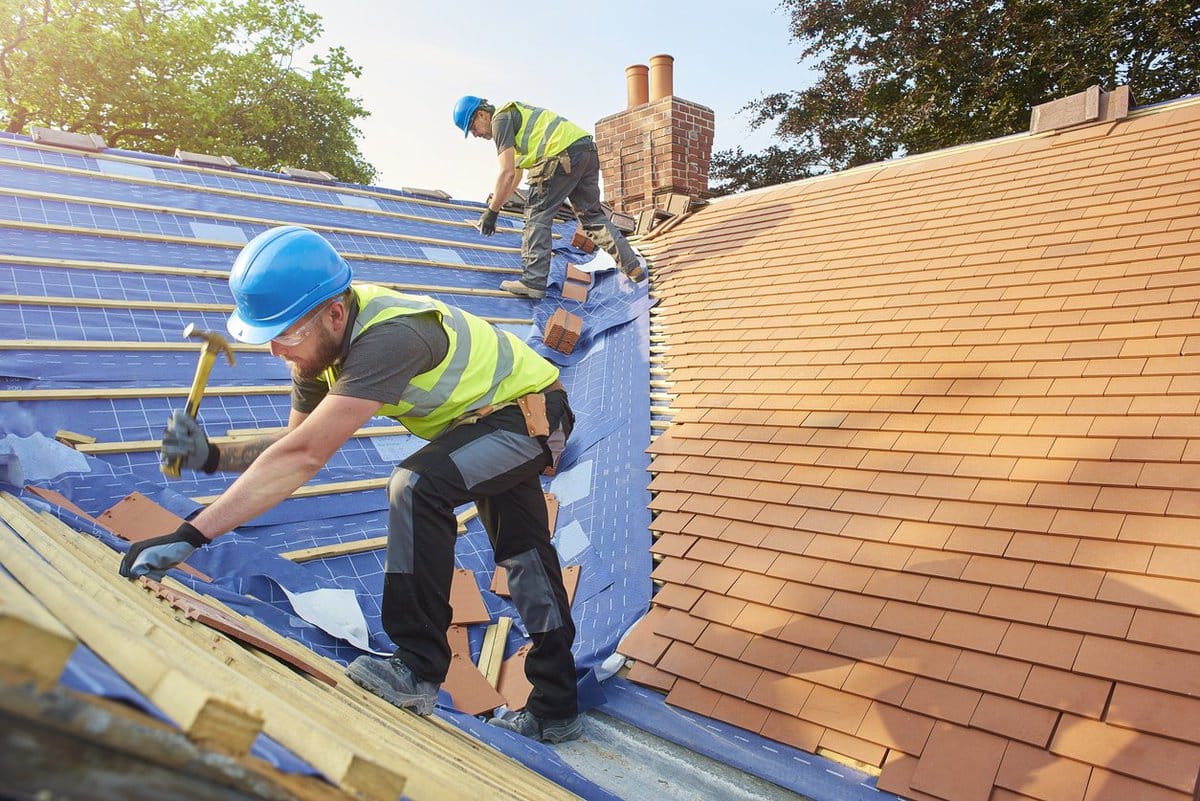Introduction
Your roof is a vital part of your home, providing protection, insulation, and aesthetic value. Its role in safeguarding your property from the elements cannot be overstated. In Fort Worth, TX, where weather conditions can range from intense summer heat to sudden thunderstorms and hail, maintaining the health of your roof is crucial. Proactive roof maintenance and timely repairs can significantly extend its lifespan, saving you from expensive replacements and ensuring your home remains secure and efficient.
To ensure your roof stands the test of time, regular inspections and timely repairs are crucial. In areas like Texas, opting for professional roof repair in Fort Worth can help address weather-related damages promptly, preventing minor issues from escalating into costly problems.
The Lifespan of Roofing Materials
Different Roofing Materials and Their Longevity
Roofing materials come with different lifespans and characteristics. Here’s a breakdown of some common options:
- Asphalt Shingles: These are the most common roofing materials, typically lasting between 15-30 years. They are affordable, easy to install, and available in various styles and colors. However, they may require more frequent maintenance and are less durable than other options.
- Metal Roofing: Known for its durability, metal roofing can last 40-70 years. It is highly resistant to extreme weather conditions, including heavy rain, hail, and high winds. Metal roofs are also energy-efficient, reflecting heat away from the house and reducing cooling costs.
- Tile Roofing: Clay and concrete tiles are incredibly durable, often lasting over 50 years. They offer excellent thermal performance, helping to regulate indoor temperatures. While they are more expensive and heavier than other materials, their longevity and aesthetic appeal make them a popular choice.
- Synthetic Roofing: Made from materials like plastic, rubber, or polymer blends, synthetic roofing can last 30-50 years. These materials are designed to mimic the appearance of natural materials like slate or wood but with enhanced durability and lower maintenance requirements.
Factors Influencing Roof Longevity
Several factors can influence the lifespan of your roof, including:
- Climate: The local climate plays a significant role in how long your roof lasts. In Fort Worth, the combination of intense heat, heavy rain, and occasional hail can wear down roofing materials faster than in milder climates.
- Installation Quality: Proper installation is crucial for the longevity of your roof. Poorly installed roofs are more susceptible to leaks, wind damage, and other issues that can shorten their lifespan.
- Maintenance Routine: Regular maintenance can help identify and address minor issues before they become major problems. A well-maintained roof will last longer and perform better.
- Material Quality: The quality of the materials used in your roof also impacts its durability. Higher-quality materials tend to last longer and provide better protection against the elements.
Routine Maintenance Practices
Importance of Regular Inspections
Regular roof inspections are essential for identifying potential issues early and preventing costly damage. Aim to inspect your roof at least twice a year, preferably in the spring and fall. During these inspections, look for:
- Shingle Damage: Check for missing, cracked, curled, or blistered shingles, which can expose the underlying structure to water damage.
- Granule Loss: If you notice excessive granules in your gutters, it may indicate that your shingles are nearing the end of their lifespan.
- Flashing Condition: Inspect the flashing around chimneys, vents, skylights, and other roof penetrations to ensure it is intact and properly sealed.
- Gutter Health: Ensure gutters and downspouts are free of debris and functioning correctly to prevent water from backing up and causing damage to the roof and foundation.
Cleaning Gutters and Downspouts
Maintaining clean gutters is crucial for protecting your roof and home from water damage. Clogged gutters can cause water to overflow, leading to leaks, mold growth, and foundation problems. Follow these steps to keep your gutters in good condition:
- Regular Cleaning: Remove leaves, twigs, and other debris from your gutters at least twice a year. Use a scoop or gloved hand to clear out the debris, and then flush the gutters with a garden hose to ensure proper water flow.
- Check for Blockages: Ensure downspouts are free of obstructions and allow water to flow away from your home. Use a plumber’s snake or high-pressure water to clear any blockages.
- Install Gutter Guards: Consider installing gutter guards to reduce the amount of debris that enters your gutters. These devices can help minimize maintenance and prevent clogs.
Removing Debris and Moss
Debris and moss on your roof can trap moisture and cause damage over time. To keep your roof clear, follow these practices:
- Trim Overhanging Branches: Trees near your roof can drop leaves, branches, and other debris onto your roof. Trim back any overhanging branches to reduce the amount of debris that accumulates.
- Regular Cleaning: Use a roof rake or blower to remove leaves, twigs, and other debris from your roof. Avoid using a pressure washer, as it can damage shingles and other roofing materials.
- Control Moss Growth: Moss can retain moisture and cause shingles to deteriorate. Apply moss-killing solutions specifically designed for roofs, and use a soft brush to gently remove the moss. Ensure the roof dries properly after rain to prevent moss from returning.
Common Roof Repairs
Fixing Leaks and Water Damage
Leaks are a common issue that can lead to significant water damage if not addressed promptly. Here’s how to handle them:
- Identify the Source: Look for signs of water stains on ceilings, walls, and in the attic. Follow the path of the water to locate the source of the leak.
- Repair the Leak: For minor leaks, use roofing cement or a patch to seal the affected area. For larger leaks or multiple problem areas, consider hiring a professional roofer to ensure proper repair.
- Prevent Further Damage: Ensure your attic is well-ventilated to reduce moisture buildup. Use dehumidifiers or fans to keep the area dry, and inspect the roof regularly for new leaks.
Replacing Damaged or Missing Shingles
Shingles can become damaged or go missing due to weather conditions or aging. Replacing them promptly can prevent further damage to your roof. Here’s a simple guide to replacing shingles:
- Remove the Damaged Shingle: Lift the edges of the surrounding shingles and carefully remove the nails holding the damaged shingle in place. Slide the damaged shingle out.
- Install the New Shingle: Slide the new shingle into place, aligning it with the surrounding shingles. Secure it with roofing nails, making sure the nail heads are flush with the shingle surface.
- Seal the Edges: Apply roofing cement to the edges of the new shingle to seal it and ensure a watertight fit.
Addressing Structural Issues
Structural problems, such as sagging roofs or damaged support beams, require immediate attention to prevent further damage. Here’s what to do:
- Identify the Problem: Look for signs of structural issues, such as uneven roof lines, cracks in walls, or sagging ceilings. These can indicate problems with the roof’s underlying structure.
- Consult a Professional: Structural issues are complex and often require expert assessment and repair. Contact a professional roofer or structural engineer to evaluate the extent of the damage and recommend appropriate solutions.
- Reinforce the Structure: Depending on the severity of the issue, repairs may involve adding support beams, replacing damaged components, or even rebuilding parts of the roof. Ensure the work is done by qualified professionals to guarantee safety and longevity.
Preventative Measures
Proper Attic Ventilation
Adequate attic ventilation is crucial for preventing heat and moisture buildup, which can damage your roof and affect indoor air quality. Here’s what to do:
- Install Vents: Ensure your attic has both intake vents (usually located in the soffits) and exhaust vents (such as ridge vents or gable vents) to promote airflow.
- Check for Blockages: Make sure vents are not obstructed by insulation, debris, or other materials. Clear any blockages to maintain proper ventilation.
- Monitor Temperature: Use a thermometer to monitor attic temperature and ensure it stays close to the outside temperature. Proper ventilation can prevent ice dams in winter and reduce heat buildup in summer.
Insulation Improvements
Good insulation helps maintain indoor temperatures, reduces energy costs, and protects your roof from damage caused by temperature fluctuations. Here’s how to enhance your attic insulation:
- Inspect Existing Insulation: Check for signs of wear, such as compacted, damp, or discolored insulation. Replace any damaged or insufficient insulation.
- Add New Insulation: Use high-quality insulation materials, such as fiberglass, cellulose, or foam, to improve thermal performance. Follow the recommended R-value for your climate to ensure optimal insulation.
- Seal Gaps: Inspect your attic for gaps, cracks, or holes that allow heat to escape or cold air to enter. Seal these openings with caulk, foam, or weatherstripping to improve energy efficiency.
Weatherproofing Techniques
Weatherproofing your roof enhances its resistance to extreme weather conditions and extends its lifespan. Consider these techniques:
- Install a Waterproof Membrane: Apply a waterproof membrane under your roofing material to prevent water from penetrating the roof structure. This is particularly important in areas prone to heavy rain or snow.
- Use High-Quality Sealants: Apply high-quality sealants around roof penetrations, such as vents, chimneys, and skylights, to prevent leaks. Reapply sealants as needed to maintain their effectiveness.
- Upgrade Shingles: Choose high-quality, impact-resistant shingles that can withstand hail, wind, and other severe weather conditions. These shingles are often more durable and provide better protection for your roof.
Conclusion
Maintaining and repairing your roof proactively can significantly extend its lifespan, ensuring your home remains protected and energy-efficient. By understanding the factors that affect roof longevity, implementing routine maintenance practices, and addressing common repairs promptly, you can avoid costly damage and prolong the life of your roof. Remember, investing in regular inspections and preventative measures pays off in the long run, keeping your home safe and comfortable for years to come.
Stay vigilant, stay proactive, and your roof will continue to serve you well through all the seasons and weather conditions Fort Worth has to offer.
Read More From Techbullion And Businesnewswire.com



































